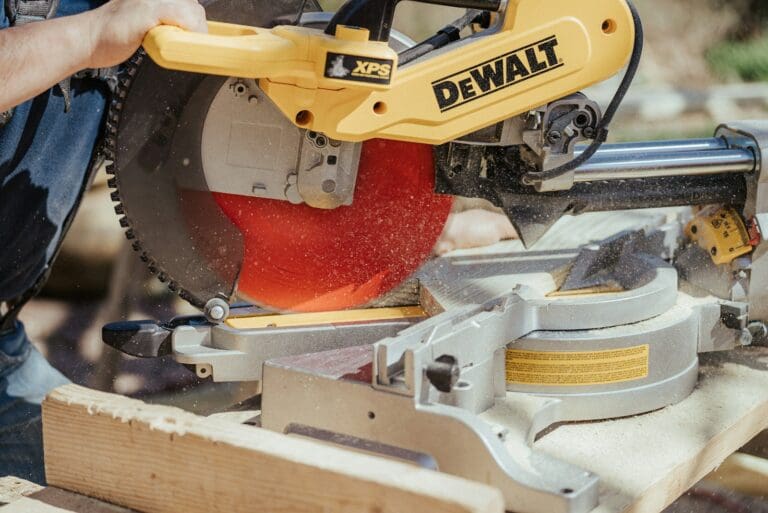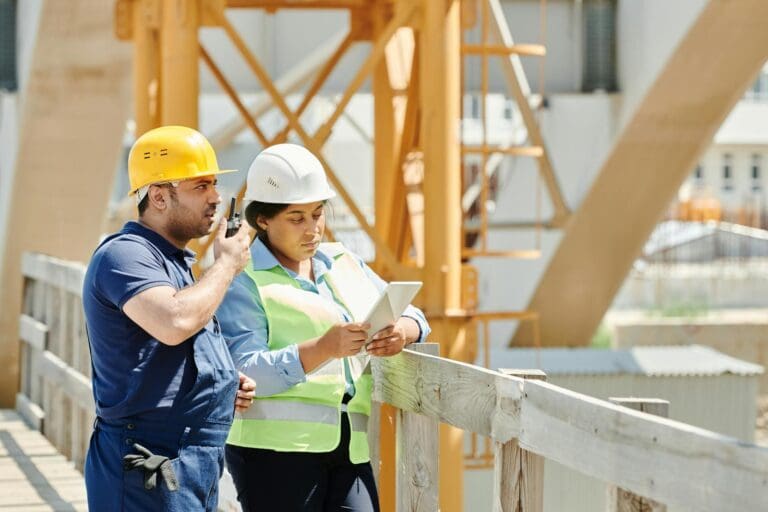As a leading provider of skilled tradespeople, MGR Workforce is always keeping an eye on the latest trends and developments in the construction industry. In our latest analysis, we delve into the industry’s current status, forecasted growth, and the pivotal trends influencing its trajectory.
The construction sector stands at a crossroads, with innovative technologies and sustainable practices driving change. Growth projections remain promising, indicating a robust expansion fueled by urbanization and infrastructural advancements. Key trends such as modular construction, sustainability, automation, and data analytics are reshaping how projects are executed.
As these trends gain momentum, MGR Workforce is at the forefront, ensuring our tradespeople are expertly trained and ready to meet the new demands of this dynamic field. Our commitment to excellence positions us to help lead the charge in an industry that is rapidly transforming to meet the challenges of tomorrow.
Current State of the Construction Industry in the USA
The construction industry in the U.S. continues to grow and expand due to new technological advancements. Over the past three years, economic uncertainty, inflation, and rising interest rates have clouded the overall outlook of the industry, but demand for construction still outweighs supply chain capabilities in most areas.
The residential sector, however, faces further challenges. The National Association of Homebuilders estimates that the number of single-family homes under construction will fall to 744,000 units this year before rebounding to 925,000 units in 2024. Currently, the construction industry is battling the highest level of unfilled job openings ever recorded, a shortage of skilled workers, labor shortages, and changes in workforce demographics.
Current State of the Construction Industry in Canada
Canada’s construction landscape is displaying a promising trend in non-residential investment, with a nationwide increase of 0.5% in January 2024 compared to the previous month. Regionally, investment growth varied, with Newfoundland and Labrador experiencing a slight downturn of 0.6%, while Manitoba led the growth with a robust 2.3% increase. Notably, both Yukon and the Northwest Territories faced significant decreases of 3.7% and 4.5%, respectively.
The total non-residential construction investment across Canada reached $5,580.0 million, according to StatCan. The provincial breakdown showcases Ontario as the highest investor with $2,275.6 million, followed by Quebec at $1,319.3 million, and British Columbia at $815.0 million. The smaller markets, including the territories, showed more modest figures.
A closer look at the market share by sector reveals that commercial projects dominate with a 55.2% share, amounting to $3,077.6 million and a year-over-year increase of 9.6%. Industrial construction holds a 19.7% share but boasts the highest annual growth rate of 25.0%, reflecting an additional $219.7 million over the previous year. The institutional sector, representing a 25.2% market share, saw the smallest growth at 0.9%, equating to an increase of $12.2 million.
These numbers indicate an overall positive momentum in Canada’s non-residential construction sector, hinting at a robust start to 2024. Despite some regional declines, the substantial increases in other provinces and sectors suggest a healthy diversification and investment landscape across the country.
Growth Predictions for the Construction Industry
The construction industry is anticipated to grow by 4% from 2019 to 2029. Some of the projects that will project this growth are healthcare facilities, data centers, and warehouses.
The U.S. population is expected to increase from 336 million people in 2023 to 373 million people by 2053. This increase in people results in a consistent rise in demand for residential housing and escalate residential construction to the top of the growing markets’ list.
Key Trends Shaping the Future of the Construction Industry
Modular Construction
The North American market saw Permanent Modular Construction (PMC) surge to a remarkable $12 billion in 2022, capturing 6.03% of the total new construction starts. This growth trajectory suggests that modular construction is not just a fleeting trend but a significant sector in the making. With the industry’s expansion, a parallel rise in automation is anticipated. By the dawn of 2030, it’s estimated that modular methods will be employed in 15-20% of all new construction projects in the United States. This shift towards modularization is poised to revolutionize the construction industry, as automation promises to bring about a new era of efficiency and innovation.
Sustainability
The global push toward sustainability, decarbonization, water conservation, and energy efficiency has begun to affect green building, and home construction. Many construction companies have announced Environmental, Sustainability, and Governance (ESG) plans in response to sustainability concerns. Additionally, net-zero constructions, which generate at least as much energy as they need to operate, are expected to increase as businesses want to benefit from tax incentives, health benefits, and reduced energy costs.
Automation
Automation, artificial intelligence (AI), and robotics are increasing productivity, reducing errors and delays, and cutting costs in the construction and manufacturing industries. Automation is expected to increase over time, particularly in modular construction, which is projected to grow significantly in the coming years. As the modular construction industry expands, automation is likely to play a larger role.
Data Analytics
As technology advances, new data analytics will be available for construction firms to assess productivity, plan projects, predict market patterns, and more. Over the next few years, more and more construction companies will use data analytics to improve their overall decision-making, allowing them to remain competitive in the current marketplace.
Labor Productivity Changes
Due to the shortage of skilled tradespeople, construction firms must focus on productivity. Construction labor productivity increased from 2009 to 2013 but steadily declined until 2019. In 2020 and 2021, productivity rose but declined in 2022, even though work hours grew slightly.
Why MGR Workforce Is The Right Choice For Staffing
As you can see, the construction industry is undergoing rapid transformation, shaped by technological innovation, environmental sustainability concerns, and shifts in the labor market. At MGR Workforce, we pride ourselves on our ability to adapt to these changes, ensuring that the skilled tradespeople we provide are up-to-date and experts in their fields.
As these industry trends continue to evolve, we position ourselves at the cutting edge, equipping our workforce with the knowledge to tackle the increasing complexities of modern construction projects. Our unwavering commitment to excellence and readiness to embrace new challenges places us at the vanguard of an industry poised for future growth and success.
MGR Workforce is leading the way in building a resilient, highly skilled workforce ready to advance the ever-changing landscape of the construction sector. Contact us today to request workers for your project.















